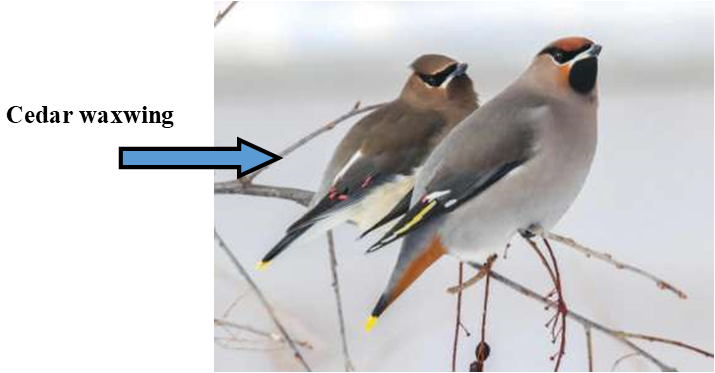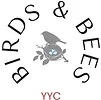LINK TO PDF NEWSLETTER DOWNLOAD


September in Alberta sees a sometimes confusing migration. The Cedar waxwings, which have inhabited much of Alberta during their summer breeding season, leave for warmer climates, while the Bohemian waxwing, which have spent their nesting season in the far north, ventures into Alberta to spend the winter months eating mostly berries and crab apples.
They are a common sight near cities and yards due to the increase of fruit trees planted by people. Usually they congregate in large flocks and are quite visible as they search the city yards for food. We have had them visit our yard to strip our Shubert tree of its autumn ripe berries—that is if the American robins don’t get there first!
I did say confusing, because both species are very similar. It is by knowing this phenomenon occurs in Autumn, that you are able to be confident of which bird you are seeing. Well, you might think so, but Alberta does have a fair number of Cedar waxwings who choose to spend the winter in Alberta and will often be seen mixed in with a flock of Bohemians. All very confusing I must admit.
The Bohemian is larger at 54g, has white bars on the wings, and rusty colour under the tail. The smaller Cedar is only 32g. Both birds have the distinct black face mask and yellow tipped tails. Bohemians take on a cooler gray tone overall with a red-orange face, while Cedars appear sandy or tan. Bohemians also have more intricate patterning on their wings, with more white marks and a yellow streak running down their primary wing feathers. Finally, and perhaps most tellingly, Bohemians have rust-coloured undertail coverts—the feathers that meet the tail on the bird’s underside—while Cedar’s undertail coverts are white. Not much to go on when you are seeing a mixed flock flying over your neighbourhood, most likely while you are driving, not birding.
So I tend to recommend depending on winter versus summer to determine which of these delightful, rambunctious, highly social birds that appear to have no sense of personal space you are seeing. Whatever season, enjoy these elegant birds and forget about the ID challenge.


